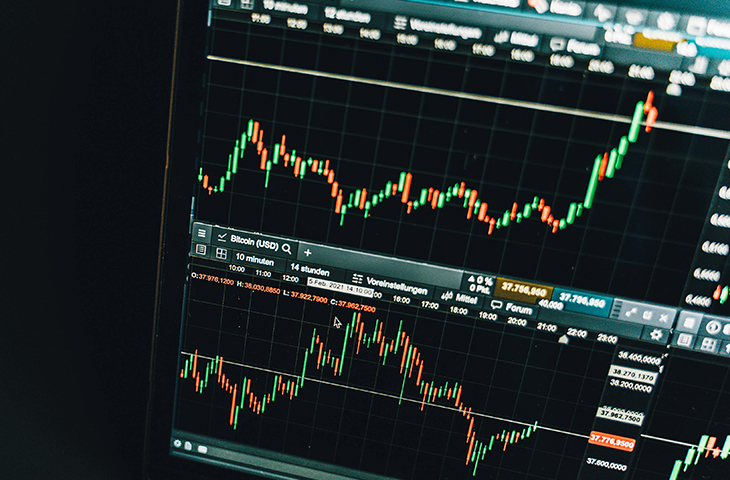Exxonmobil Could Produce $165 Billion In Surplus Cash After Paying Dividends Through 2030

ExxonMobil (NYSE: XOM) has become a cash-gushing machine in recent years. The oil giant delivered industry-leading cash flow from operations of $17.6 million during the third quarter. It used that money to invest in growing its business while returning a substantial amount to shareholders.
The oil company could produce an even bigger cash flow gusher in the coming years. Here's a look at its plan to make a boatload of cash over the next few years.
Spending money to make money
ExxonMobil recently revealed its 2030 plan. That strategy would see the company deliver an incremental $20 billion in annual earnings and $30 billion in cash flow by 2030. That implies compound annual growth rates of 10% for its earnings and 8% for its cash flow.
The crux of that plan is to continue investing heavily in growing its business. Exxon anticipates its capital spending will be between $27 billion and $29 billion next year, rising to a range of $28 billion to $33 billion annually in the 2026-2030 timeframe. Overall, the oil company plans to pump $140 billion into major capital projects and its Permian Basin development program. The company expects these investments will generate returns of more than 30%. Exxon also expects to shave another $7 billion out of its structural costs over the next several years.
Those catalysts will grow the company's annual cash flow from operations from around $50 billion this year to roughly $80 billion by 2030. That assumes oil averages around $65 a barrel, which is below its recent price in the mid-$70s.
Returning the windfall
Given the upper limit on Exxon's planned capital spending range, the company's growing cash flow will translate into increased free cash flow. At $65 oil, Exxon would produce $165 billion in cumulative surplus free cash flow by 2030 above its current dividend level.
Exxon is currently one of the largest dividend payers in the world. It paid $4.3 billion in the second quarter, which was the second-largest dividend payout among members in the S&P 500 in that period. It has paid $12.3 billion in dividends through the first nine months of this year.
The company recently increased its payment for the 42nd year in a row. That's an elite record. Less than 4% of companies in the S&P 500 can make that claim. That steady upward trend seems almost certain to continue, given the company's expectation that it will produce $165 billion in surplus cash after paying dividends at the current level.
Exxon will also undoubtedly return additional cash to shareholders through share repurchases. It expects to buy back about $20 billion in shares next year and another $20 billion in 2026, assuming reasonable conditions in the oil market. That's higher than this year's level, which it expects will be around $19 billion. Given the growth expected in its cash flow, Exxon could increase its share repurchase rate in 2027 and beyond if market conditions remain reasonable.
The company's plan would also enable it to maintain its elite balance sheet. Exxon currently has one of an AA- credit rating, one of the highest in the oil patch, and the sector's lowest leverage ratio. Exxon ended the third quarter with a 5% net-debt-to-capital ratio after adding the $27 billion of cash on its balance sheet. It should have the financial flexibility to continue repaying debt and building cash, putting it in an even stronger position to weather the next oil market downturn.
Exxon also has the flexibility to use cash to fund future acquisitions. The oil company typically finances deals with stock; Pioneer and Denbury Resources are recent examples of all-stock deals. However, if necessary, it could make an all-cash deal or add a cash component to push an acquisition across the finish line.
A cash-gushing oil stock
Exxon is already the sector leader in producing cash. However, it plans to extend its lead over the next few years. That has it on pace to make a massive amount of surplus cash, which it can use to continue increasing its dividend and repurchase shares while maintaining its fortress-like balance sheet. Exxon's prodigious ability to produce cash makes it one of the lowest-risk investments in the oil patch.
Don’t miss this second chance at a potentially lucrative opportunity
Ever feel like you missed the boat in buying the most successful stocks? Then you’ll want to hear this.
On rare occasions, our expert team of analysts issues a “Double Down” stock recommendation for companies that they think are about to pop. If you’re worried you’ve already missed your chance to invest, now is the best time to buy before it’s too late. And the numbers speak for themselves:
- Nvidia: if you invested $1,000 when we doubled down in 2009, you’d have $348,112!*
- Apple: if you invested $1,000 when we doubled down in 2008, you’d have $46,992!*
- Netflix: if you invested $1,000 when we doubled down in 2004, you’d have $495,539!*
Right now, we’re issuing “Double Down” alerts for three incredible companies, and there may not be another chance like this anytime soon.
*Stock Advisor returns as of December 16, 2024
Matt DiLallo has no position in any of the stocks mentioned. The Motley Fool has no position in any of the stocks mentioned. The Motley Fool has a disclosure policy.

